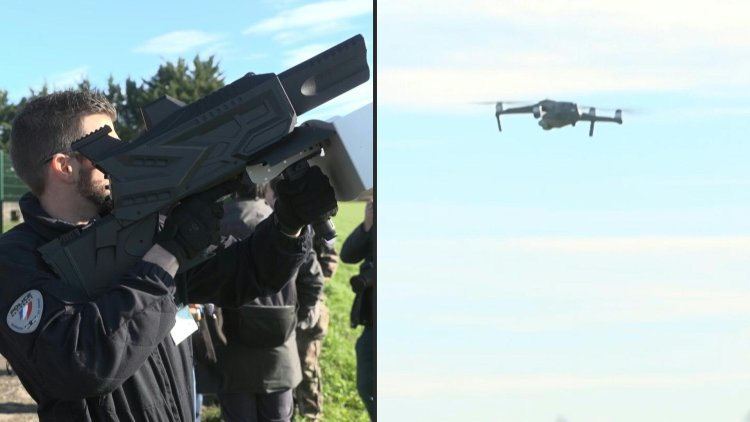France's Anti-Drone Olympics Prep

France is testing its anti-drone response system for the first time on a large scale, in a time trial to secure the Olympic Games in the face of the explosion in the number of these devices in recent years.
At the Villacoublay air base, near Paris, a police officer carries a jamming rifle weighing around ten kilos on his shoulder and aims at a drone which is heading towards him before stopping it in its tracks.
Four and a half months before the Olympics, the exercise, orchestrated by the Air Force with the collaboration of the police and the gendarmerie, is a crucial test carried out for two weeks with several anti-drone systems on three sites, in Paris and Marseille in addition to Villacoublay.
Micro and minidrones, machines that can sometimes be confused with birds, do not necessarily represent the threat likely to cause the most damage but it is the most likely and it is a novelty in the last three years against which the fight is ongoing.
Drones have been widely seen in recent conflicts, in Nagorno-Karabakh, the Gaza Strip and Ukraine, which consumes 10,000 of all sizes per month, according to the French Institute of International Relations.
In France, the number of drones has increased from 400,000 in 2017 to 3 million today, according to official sources.
Around "fifteen" heavy systems, including one British, will be deployed during the Olympics, alongside jamming rifles, a laser or drone interceptor drone, the RapidEagle, equipped with nets.
The Coubertin exercise should notably make it possible to handle for the first time in real conditions three examples of a new system called “Parade”.
These systems manufactured by manufacturers Thales and Cs Group should have been delivered in June 2023, which caused great concern, leading to the launch of a mission by the Senate Defense Committee at the end of 2023.















